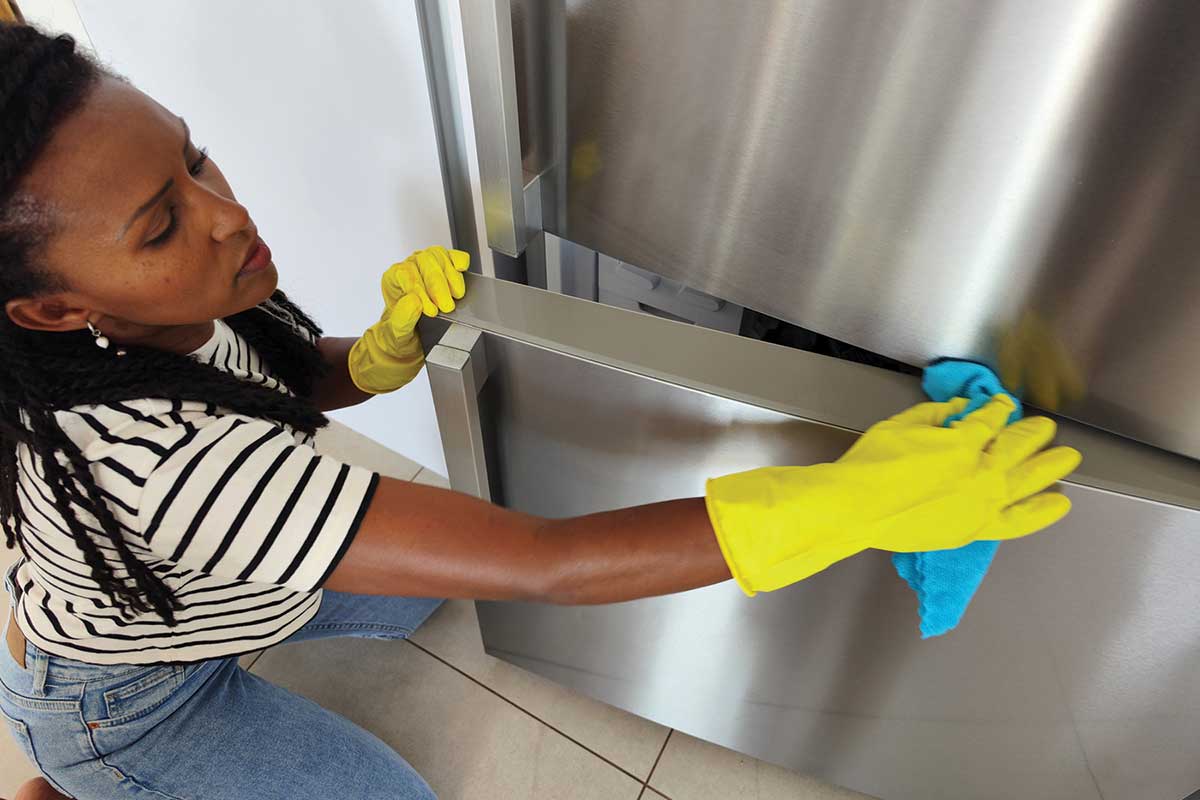Did you deep clean your refrigerator during spring cleaning? If not, June can be a great time to do a wholesale clean-out of your kitchen’s central appliance so that you have room for all the fixin’s for upcoming summer fun. Adding this chore to your to-do list four times a year—when the seasons change—can help you keep up with the task, leading to improved energy efficiency and better health.
This guide from the Department of Energy provides practical tips on how to clean a fridge and keep it in better shape between cleanings.
Remove and Take Stock
When you start cleaning the inside of your refrigerator, turn off the power (via the fusebox) or unplug your appliance. Next remove all food from your refrigerator and freezer, placing it in coolers so everything is stored safely. Use this opportunity to throw away spoiled or expired food, and then take out removable shelves and drawers. Let these items warm to room temperature before washing.
Deep Clean Inside
When cleaning the inside of your refrigerator, look for a nonabrasive cleaner that degreases and can help kill mold, mildew and germs but isn’t too harsh. Thoroughly wipe down the walls, ceiling and bottom of your refrigerator with the cleaner, then rinse it with a soft, damp cloth. Do the same with the drawers and shelves, then dry all surfaces completely before reinstalling the shelves and drawers. Clean shelves, drawers and handles with a solution of soap and water, then disinfect surfaces with appropriate products such as bleach.
Get Underneath
Cleaning the inside of your refrigerator helps prevent mold, mildew and odors, but it’s important to clean underneath your refrigerator, as well. Cleaning the condenser coils regularly can help regulate your fridge temperature and help prevent food from freezing in your fridge. Using a specialized cleaning wand, gently sweep under the bottom of your refrigerator to clean the condenser coils.
Don’t Forget the Outside
After cleaning the inside of the fridge, take a few moments to clean the door seals, doors and handles with a mix of mild dish soap and water, then dry everything thoroughly (especially the door seals). If you have a stainless steel refrigerator, clean the doors with a specially formulated stainless steel cleaner to avoid streaks or residue.
Keep It Clean
Periodically deep cleaning your refrigerator keeps your system and your family in top condition, but you should also keep up with fridge cleanliness on a daily basis. Regularly check for food past its expiration date and throw away anything that has mold, is discolored or smells bad.
Make sure the refrigerator temperature is set between 35 and 38 degrees and that the freezer is set at zero.
The top shelf and door tend to be the warmest zones, while the middle and bottom shelves get progressively cooler. So, you should keep condiments in the door, dairy products, eggs and spreads on the upper shelves, meats and milk on the lowest shelf, and fruits and vegetables in the crisper.
Make sure raw meat products are not touching or leaking on anything else in the refrigerator by always storing them on the lowest shelves and making sure they are well sealed. If a leak does occur, wash and disinfect the affected surfaces immediately.
Keep the freezer full, but only fill the refrigerator about 75% to leave room for air circulation.


